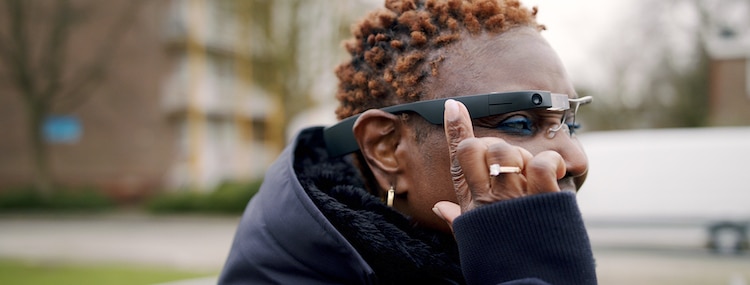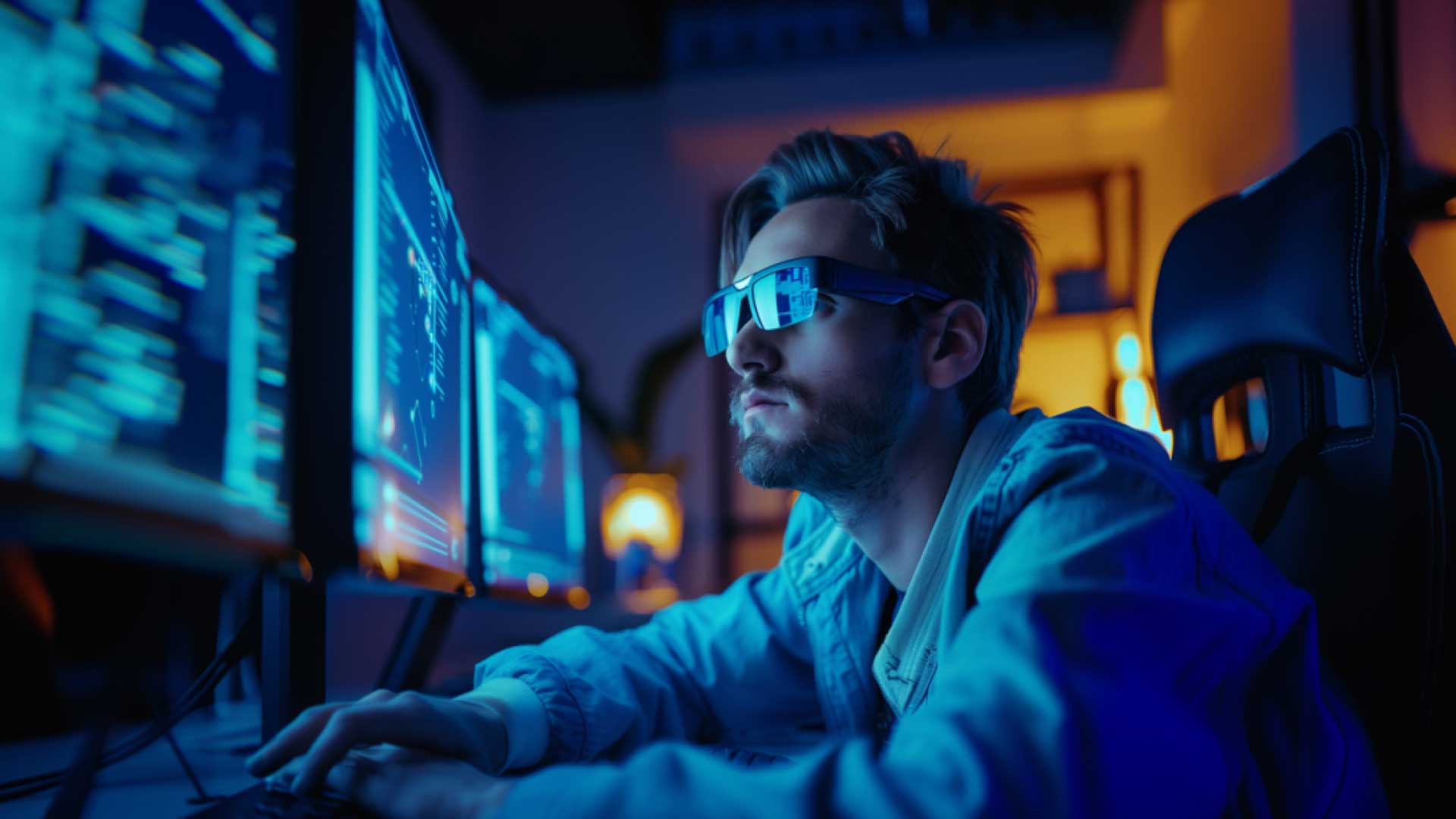Enhancing Availability Through Assistive Innovation for the Blind
The assimilation of assistive technology for the blind stands for a crucial improvement in ease of access, essentially altering exactly how individuals browse their environments and involve with culture. From screen viewers to ingenious smart canes, these devices not only boost self-reliance however also advertise inclusivity in different spheres of life. As we discover the varied sorts of assistive gadgets and their tangible influence on day-to-day living, it becomes vital to take a look at exactly how continuous technological improvements are reshaping the landscape of support for the blind area. What implications do these growths hold for the future of ease of access?
Overview of Assistive Innovation
Assistive technology refers to an array of devices and software application designed to boost the abilities of individuals with specials needs, consisting of those who are blind or visually impaired. This innovation plays a critical role in advertising freedom and improving the lifestyle for customers. By providing alternative methods for accessing details and executing day-to-day jobs, assistive technology empowers individuals to navigate their atmospheres better.
The growth and implementation of assistive technology accept a range of concepts targeted at promoting ease of access. These principles consist of user-centered layout, which prioritizes the needs and preferences of the person, and the assimilation of modern technology right into daily tasks. Such innovations guarantee that assistive devices are not just functional however additionally instinctive and very easy to make use of.
Furthermore, assistive modern technology incorporates a diverse spectrum of remedies, from low-tech choices like magnifiers to modern advancements such as screen viewers and Braille screens. The ongoing advancement of this area is driven by the need to address the special difficulties faced by individuals with aesthetic impairments (Wearable technology for low vision). As technology proceeds to development, the capacity for enhancing ease of access and advertising inclusivity continues to be appealing, ultimately contributing to a more fair society

Sorts Of Assistive Devices
Countless kinds of assistive devices are available to support individuals who are blind or visually damaged, each designed to deal with details needs and obstacles. These devices can be extensively classified into 3 major kinds: low-tech, mid-tech, and modern remedies.
Low-tech gadgets consist of items such as magnifiers, Braille tags, and tactile maps. These are reasonably basic devices that enhance the individual's ability to connect with their setting without calling for complicated innovation.
Mid-tech tools often include much more innovative attributes, such as digital magnifiers and mobile Braille note-takers. These gadgets can provide capabilities like speech output, permitting individuals to gain access to information much more effectively.

Effect on Daily Living
The accessibility of different assistive gadgets substantially boosts the lifestyle for individuals who are aesthetically damaged or blind, impacting their everyday living in extensive ways. By incorporating technologies such as screen viewers, Braille displays, and audio summary solutions right into their regimens, individuals gain better freedom and independence. These devices facilitate accessibility to information, allowing people to perform daily jobs, such as reading e-mails, browsing public rooms, and enjoying media content.
Moreover, assistive devices equip individuals to involve even more completely in social communications and community activities. The ability to use smart devices furnished with accessibility features enables for smooth communication and link with others. This connection fosters a sense of belonging and minimizes sensations of isolation.
In expert setups, assistive technology supports performance by allowing people to complete work jobs successfully. Tools like voice recognition software program and specialized magnification gadgets make more info here it possible for users to join the workforce on equivalent footing with their sighted peers.

Developments in Modern Technology
Current technological improvements have actually considerably changed the landscape of tools offered for people that are blind or visually damaged. The integration of expert system (AI) and artificial intelligence has offered rise to applications that boost navigating and item acknowledgment. For instance, smart device applications can now use AI to identify and explain environments in real-time, providing individuals with useful contextual information.
Additionally, advancements in haptic technology have led to the growth of clever walking sticks furnished with sensors that discover challenges and offer tactile feedback. This empowers customers to navigate their environment with increased self-confidence and freedom. Developments in text-to-speech software and braille displays have enhanced the availability of digital content, allowing for smooth communication with numerous media.
Wearable innovations, such as smart glasses, are additionally making strides in helping visual impairment. As technology continues to develop, the capacity for even more transformative devices stays on the horizon.
Future Trends and Innovations
As modern technology rapidly progresses, the future of assistive tools for people that are blind holds enormous guarantee. Developments in expert system (AI) and equipment discovering are poised to revolutionize the means blind customers engage with their atmospheres. AI-driven applications are being created to boost things acknowledgment, permitting customers to recognize and navigate their environments with greater convenience and accuracy.
In addition, improvements in haptic feedback modern technology are allowing the production of tactile maps and navigating aids that give real-time information with touch. These innovations not just enhance wheelchair however also foster independence. In addition, wearable gadgets outfitted with enhanced truth (AR) features are emerging, using individuals visual details through audio summaries, therefore bridging the gap in between the electronic and physical globes.
In addition, the assimilation of wise home modern technology offers brand-new opportunities for ease of access, allowing individuals to regulate their living environments with voice commands or mobile phone applications. As partnership between technology designers and the blind community Go Here continues, the emphasis on user-centered design will certainly make certain that future technologies are tailored to meet the one-of-a-kind demands of this populace (Wearable technology for low vision). The trajectory of assistive innovation assures a more empowering and comprehensive future for people who are blind
Verdict
Finally, assistive technology plays an essential duty in boosting access for people with aesthetic disabilities. The varied selection of gadgets, including screen viewers and clever walking canes, considerably improves daily living and promotes independence. Continual advancements in technology and user-centered design guarantee that these tools cater efficiently to the special needs of the blind community. As advancements development, increased inclusivity and empowerment can be anticipated, eventually improving the lifestyle for those influenced by aesthetic problems.
The assimilation of assistive innovation for the blind represents a crucial advancement in accessibility, basically modifying just how people browse their environments and engage with society.Assistive modern technology refers to a variety of tools and software program designed to you can try this out improve the capacities of people with disabilities, consisting of those who are aesthetically impaired or blind. Wearable technology for low vision.As technology swiftly progresses, the future of assistive tools for individuals who are blind holds enormous guarantee. The trajectory of assistive technology promises a much more comprehensive and empowering future for individuals that are blind
In final thought, assistive technology plays an essential function in boosting ease of access for individuals with visual problems.